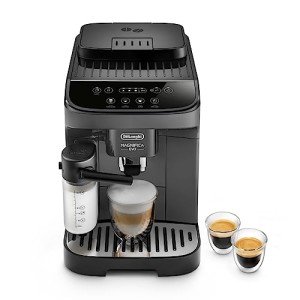Bean To Cup Espresso Coffee Machine: The Ultimate Guide
Over the last few years, the coffee culture has actually experienced a significant improvement, with the rise of home developing devices offering benefit and quality comparable to café offerings. Amongst these gadgets, the Bean to Cup Espresso Coffee Machine sticks out as a preferred amongst coffee connoisseurs and casual drinkers alike. This comprehensive guide explores what these machines are, how they function, the benefits they use, and elements to think about when choosing the ideal one.
What is a Bean to Cup Espresso Coffee Machine?
A Bean to Cup Espresso Coffee Machine is an advanced coffee developing device that grinds coffee beans fresh for each cup, automating the entire espresso-making procedure. These machines normally include integrated grinders, incorporated milk frothers, and precise brewing technology, permitting users to create top quality espressos, lattes, coffees, and more, all from the convenience of their homes. The benefit, combined with the rich and robust flavors produced, has made these machines increasingly popular.
How Does It Work?
The basic operation of a Bean to Cup Espresso Coffee Machine can be broken down into several key steps:
Bean Grinding
- The machine grinds whole coffee beans instantly before brewing, guaranteeing optimum freshness and taste retention.
Developing
- Ground coffee is packed into a filter, and warm water is forced through the coffee grounds at high pressure, which is necessary for producing espresso.
Frothing (Optional)
- Many designs include a steam wand or milk frother for preparing frothed milk for lattes and cappuccinos.
Serving
- The last phase involves dispensing the brewed coffee into a cup, frequently with programmable features for customization.
Advantages of Bean to Cup Espresso Machines
Investing in a Bean to Cup Espresso Coffee Machine provides numerous advantages, contributing to its growing popularity.
| Advantage | Description |
|---|---|
| Convenience | One-touch operation minimizes the time and effort required to prepare coffee. |
| Quality | Freshly ground beans lead to a richer, more delicious drink compared to pre-ground alternatives. |
| Modification | Users can change settings to suit individual preferences, including grind size, coffee strength, and milk froth levels. |
| Cost-Effective | Although the initial financial investment may be high, cost savings on coffee purchases from cafés can be substantial over time. |
| Versatility | The ability to brew different coffee types, from espresso to cappuccino, widens the machine's appeal. |
Key Features to Look For
When selecting a Bean to Cup Espresso Coffee Machine, numerous functions can influence the purchase decision. Below are necessary aspects to consider:
Grinder Type
- Burr mills are chosen over blade mills for their constant grind size.
Developing Pressure
- Try to find machines that offer at least 15 bars of pressure for optimal espresso extraction.
Milk Frother
- Select between manual steam wands or automatic milk frothers based on choices for milk texture and foam.
Interface
- An user-friendly control panel with programmable settings boosts the overall experience.
Size and Design
- Think about the counter top area readily available and pick a style that matches your kitchen area aesthetic appeals.
Maintenance Options
- Some machines use automatic cleaning cycles, which can save time and effort in upkeep.
Popular Bean to Cup Espresso Machines
Picking a machine that fits one's needs can be challenging. Below is Best Bean To Cup Coffee Machine With Automatic Milk Frother of popular models, understood for their dependability and efficiency.
| Model | Secret Features | Price Range |
|---|---|---|
| De'Longhi Magnifica ESAM3300 | Adjustable coffee strength, compact style | ₤ 550 - ₤ 700 |
| Breville Barista Touch | Touchscreen controls, incorporated cone-shaped burr grinder | ₤ 800 - ₤ 1,150 |
| Saeco PicoBaristo | Automatic milk frother, 12 coffee specialties | ₤ 900 - ₤ 1,300 |
| Jura E8 | Pulse Extraction Process, Alexa Compatible | ₤ 1,800 - ₤ 2,500 |
| Gaggia Anima | Easy to clean up, programmable settings | ₤ 500 - ₤ 800 |
Upkeep Tips
Keeping a Bean to Cup Espresso Coffee Machine in great condition is important for making sure longevity and optimum efficiency. Here are some maintenance pointers:
- Regular Cleaning: Clean the machine's parts routinely, including the drip tray, coffee premises container, and water tank.
- Descaling: Perform descaling every few months based upon water hardness and usage to prevent mineral accumulation.
- Change Water Filter: If the machine has a water filtration system, change the filter as suggested.
- Check Seals and Gaskets: Check for wear and tear to prevent leaks and ensure correct pressure during brewing.
Frequently asked questions
1. Are Bean to Cup Espresso Machines easy to use?Yes, the majority of designs are developed for user convenience with basic control panels and one-touch operation. 2. Can I use pre-ground coffee in these machines?While some machines enable making use of pre-ground coffee, the primary advantage depends on using whole beans for fresh grinding. 3. How often should I clean my Bean to Cup machine?Regular maintenance is essential; daily cleaning of detachable parts and descaling every 2-3 months are generally advised. 4. What is the average
life expectancy of a Bean to Cup Espresso Coffee Machine?With correct maintenance, these machines can last anywhere from 5 to 15 years based on usage quality
. 5. Are these machines worth the investment?Though discover here can be costly, the convenience, quality coffee production, and long-lasting cost savings make them a worthwhile investment for numerous coffee enthusiasts. Investing in a Bean to Cup
Espresso Coffee Machine can significantly enhance the home
coffee experience. By offering freshly brewed, high-quality coffee, these machines deal with the growing need for café-style beverages in the comfort of one's kitchen area. With many alternatives on the marketplace, comprehending features and personal choices will aid in choosing the best machine to match any coffee enthusiast's requirements.

